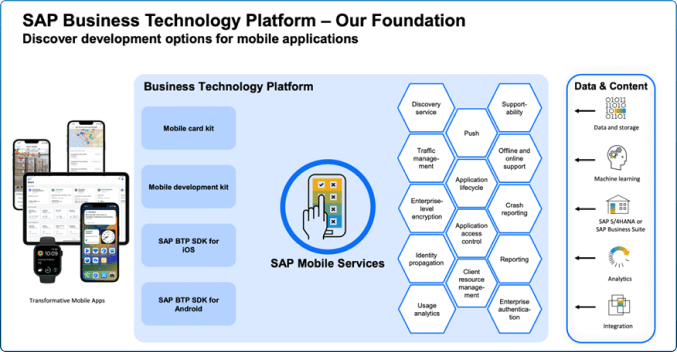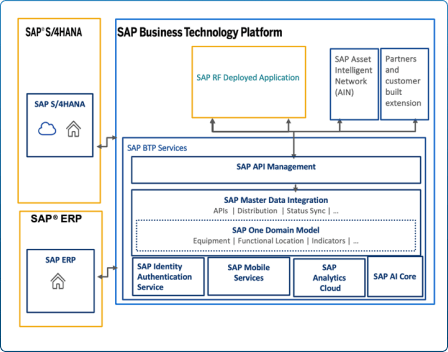RF Scanning application with SAP BTP and ECC for Warehouse receiving, put-away and picking functions

Customer Profile
Wood products Manufacturing Customer in North America

Challenges
Manual process used in the Warehouse for goods receipt and handling created inaccurate Inventory Information

Solution
Our customer had un-used SAP BTP licenses and was looking for optimization in the Warehouse space. We effectively identified using Radio Frequency (RF) scanning to optimize the key functions of the Warehouse. RF scanning offers real-time data capture, streamlining inventory processes, and enhancing overall operational efficiency. When integrated with SAP’s Business Technology Platform (BTP) and connected to HANA or ECC systems, the potential of RF scanning is magnified.
Below write-up introduces the key components used and a brief overview of
1. Introduction to SAP BTP
SAP Business Technology Platform (BTP) is a holistic platform that amalgamates database and data management, analytics, application development, and integration. It empowers businesses to harness their data, transforming it into actionable insights and tangible business value. With its cloud-native capabilities, SAP BTP facilitates seamless application development, deployment, and management. BTP offers microservice called Mobile service, using which mobile/hybrid application can be developed.


Overall Integration diagram between BTP and S/4 HANA or ECC system
2. Crafting the RF Scanning Application
The development journey of an RF scanning application in SAP BTP encompasses:
- User Interface (UI) Design: Leveraging SAP Fiori, developers can sculpt user-centric interfaces tailored for RF scanning operations.
- Integration with RF Hardware: The application needs to seamlessly communicate with RF scanners, capturing data in real-time. SAP BTP’s robust integration capabilities ensure smooth interfacing with diverse RF hardware.
- Processing RF Data: Post data capture, it’s vital to process and interpret the RF signals, converting them into meaningful information.
- Synchronizing with SAP HANA/ECC: The processed data is then channeled to the SAP HANA or ECC system. This real-time integration ensures that every RF scan instantly updates the core SAP system, reflecting in relevant business processes.
3. Advantages of the Cohesive System
- Instantaneous Data Updates: The direct conduit to HANA or ECC ensures that RF scanned data is immediately available, fostering real-time decision-making.
- Precision: RF scanning significantly diminishes human-induced errors, enhancing data accuracy.
- Operational Efficiency: Accelerate warehouse processes, from goods receipt to order picking and shipment.
- Superior User Experience: SAP Fiori’s design principles ensure the application is not just functional but also user-friendly.
4. Potential Challenges and Considerations
While the integrated system is replete with benefits, certain challenges need attention:
- Hardware Interoperability: Guaranteeing consistent performance across diverse RF scanner models and brands.
- Network Constraints: In areas with limited network connectivity, real-time data synchronization with HANA or ECC might experience delays.
- Data Security and Integrity: Ensuring the sanctity and security of RF scanned data is paramount, especially during transmission.

Conclusion: SAP BTP With ECC
The fusion of RF scanning applications, developed on SAP BTP, with HANA or ECC systems epitomizes the convergence of cutting-edge technology with core business processes. This integration promises not just operational efficiency but also paves the way for future innovations in warehouse management and logistics. As we advance, the synergy between technology and operations will only grow stronger, heralding a new era of digital transformation.
If you are looking to digitize your warehouse or external facility with an existing technology tools, get in touch with us by filling the form and one of our team member will be in touch shortly.